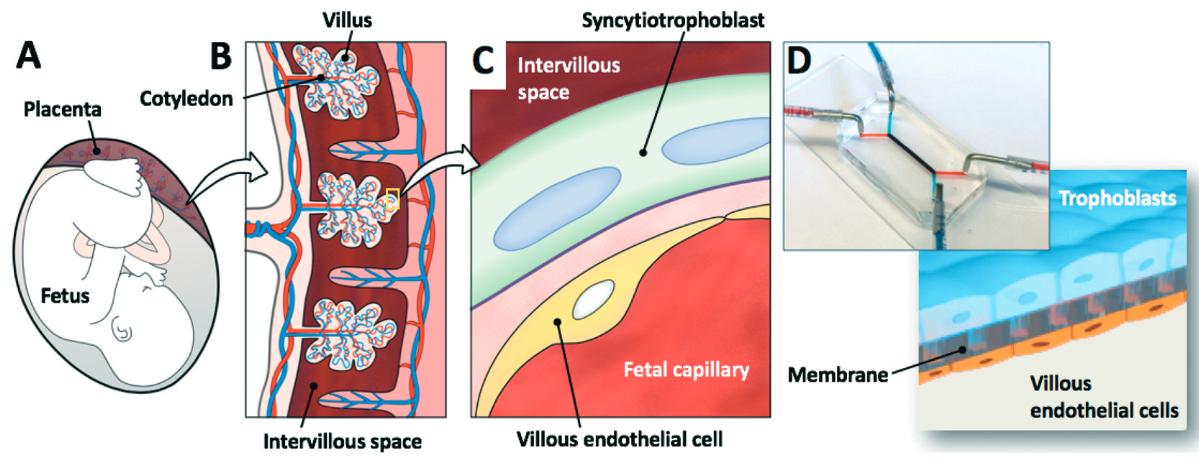Penn researchers have developed a “placenta-on-a-chip” to model the transport of nutrients across the placental barrier. It will be used in studies to identify causes of and prevention methods for dangerous preterm birth. (Lungs, intestines, and eyes “on chips” are similarly being used for research.)
The underlying mechanisms of pre-term birth studies currently rely on experimenting with intact, living human placentae. This method is limited by complexity, the scarcity of samples, and the limited time the tissue is viable.
The device contains two layers of human cells that model the interface between mother and fetus. Microfluidic channels on both sides allow the study of how molecules are transported through, or are blocked by, that interface.
Wearable Tech + Digital Health + NeuroTech Silicon Valley – February 7-8, 2017 @ Stanford University
